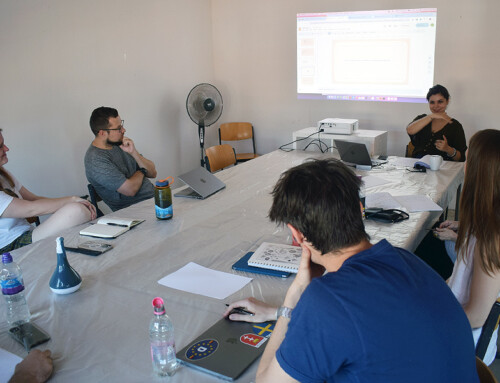October 11, 2023, 2 pm
Many thanks to the gallery owner Barbara Wien introducing our participants to the concept, program & history of Barbara Wien gallery & art bookshop and guiding us through the exhibition Endnote oblique, pink by Ian Kiaer. The visit is part of the BAI Studio Program | Berlin Artist Residency, Art School, Arts Incubator, and Live Online Courses & Classes.
Exhibition Date: September 09 – November 09, 2023
Location: BARBARA WIEN gallery & art bookshop
Opening Hours: Tuesday – Friday, 11 AM – 6 PM; Saturday 11 AM – 4 PM
Address: Schöneberger Ufer 65 (3rd floor), 10785 Berlin
“We are delighted to present the exhibition Endnote oblique, pink by British artist Ian Kiaer. In anticipation of his show, we had a conversation with Kiaer about the exhibition and his work.
Your third exhibition at Galerie Barbara Wien focuses on painting. In your previous shows at the gallery, you combined painting with installation and sculpture, involving models, architectural structures, inflatables, and video. How do you differentiate between these categories and do you give preference to a medium?
Kiaer: For a long while I’ve been interested in the ‘model as a form’, equivalent in writing say, to the aphorism or written fragment—something that can operate between the more established disciplines of painting, sculpture, film. The model’s capacity to pragmatically carry ideas in fragmentary, makeshift, experimental modes means it can respond to the demands of each discipline, with the resulting works speaking to one another. To think of paintings as models is not new, but it does allow one to revisit certain concerns in painting that otherwise might be overlooked or considered already resolved.
A recurring element in your paintings is a subtly drawn baseline grid in the background. In painting, the grid is usually a tool to follow the correct proportion of a certain template image. Your paintings are rather abstract, figurative representations are only hinted at or emerge as accidental traces in the material. What meaning does the grid take on in your work?
Kiaer: The grid is perhaps one example of returning to a particular figure in painting. It has all kinds of associations both with Modernism and the monochrome, as well as earlier historical manifestations of squaring up an image for translation. Rosalind E. Krauss mentions its relation to the Romantic windowpane and implies a certain loss of narrative, a kind of ghost image. I’ve always been intrigued by the grid as an almost forlorn method, an attempt to pin something down that altogether resists measurement. There are those perverse diagrams that Ruskin uses to attempt to rationalise representations of clouds. It’s so beautifully unsuited, to use fixed geometric principles to contend with water vapour, but it speaks of the wider concern for different kinds of knowledge to be at play in a work. That my grids are pencil suggests something quite tentative, as a way of beginning something, a means of accounting for the surface of the work and attending to the different traces, marks and stains that might already be present or later appear in the process of painting. Grids then become a way of giving attention to an emergent image while also asserting a certain flatness, where mood or tone might be given as much importance as information or ideas.” (Text excerpt from the press release by courtesy of Barbara Wien gallery)















